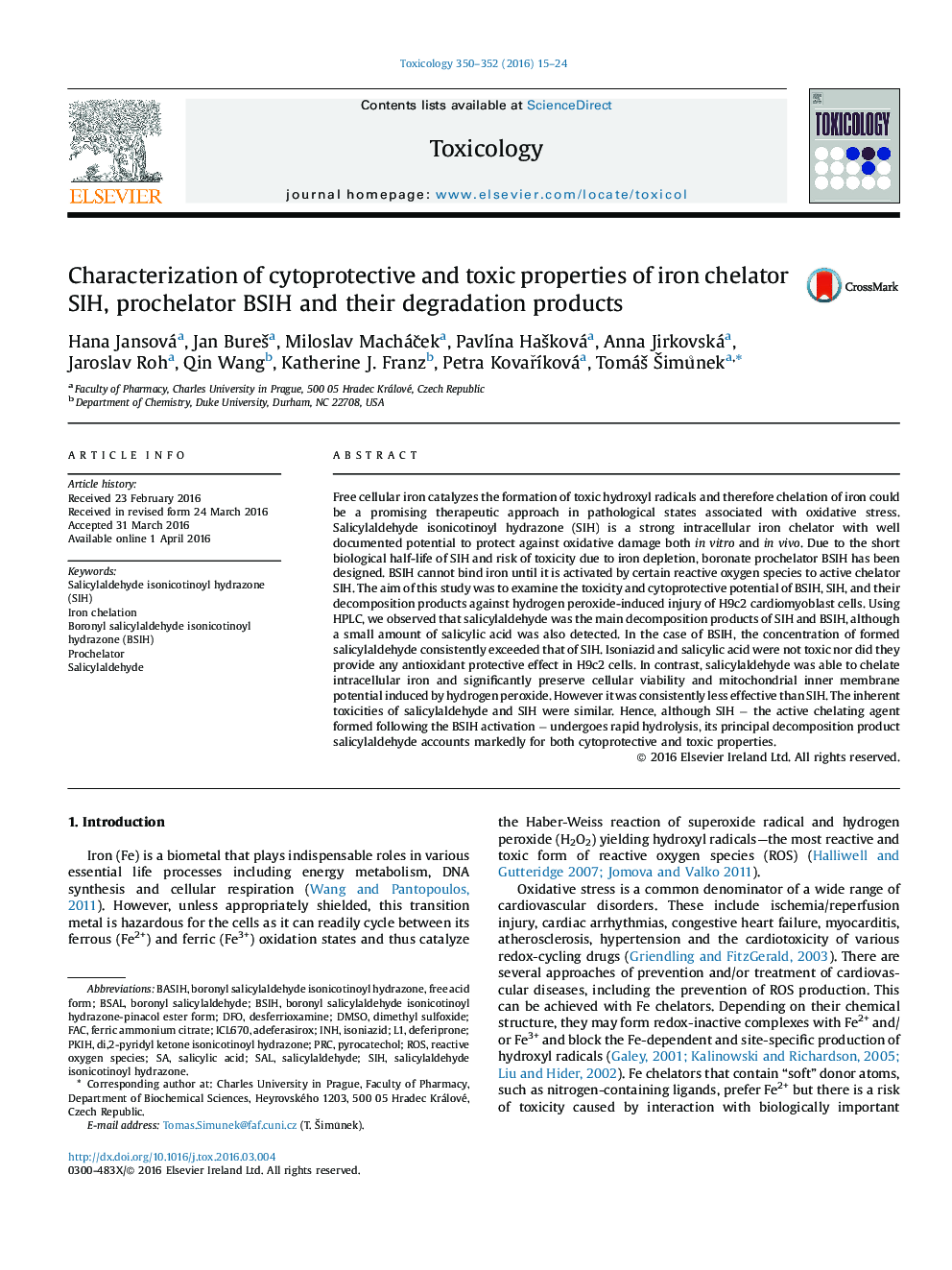| کد مقاله | کد نشریه | سال انتشار | مقاله انگلیسی | نسخه تمام متن |
|---|---|---|---|---|
| 2595443 | 1562312 | 2016 | 10 صفحه PDF | دانلود رایگان |

• Fe prochelator BSIH is nontoxic, stable and does not interfere with Fe homeostasis.
• BSIH is activated by ROS to Fe chelator SIH that is prone to hydrolysis.
• Salicylaldehyde is the main decomposition product of SIH and BSIH.
• Salicylaldehyde retains chelating activity and significant cytoprotective properties.
• BSIH is promising compound with multiple active degradation products.
Free cellular iron catalyzes the formation of toxic hydroxyl radicals and therefore chelation of iron could be a promising therapeutic approach in pathological states associated with oxidative stress. Salicylaldehyde isonicotinoyl hydrazone (SIH) is a strong intracellular iron chelator with well documented potential to protect against oxidative damage both in vitro and in vivo. Due to the short biological half-life of SIH and risk of toxicity due to iron depletion, boronate prochelator BSIH has been designed. BSIH cannot bind iron until it is activated by certain reactive oxygen species to active chelator SIH. The aim of this study was to examine the toxicity and cytoprotective potential of BSIH, SIH, and their decomposition products against hydrogen peroxide-induced injury of H9c2 cardiomyoblast cells. Using HPLC, we observed that salicylaldehyde was the main decomposition products of SIH and BSIH, although a small amount of salicylic acid was also detected. In the case of BSIH, the concentration of formed salicylaldehyde consistently exceeded that of SIH. Isoniazid and salicylic acid were not toxic nor did they provide any antioxidant protective effect in H9c2 cells. In contrast, salicylaldehyde was able to chelate intracellular iron and significantly preserve cellular viability and mitochondrial inner membrane potential induced by hydrogen peroxide. However it was consistently less effective than SIH. The inherent toxicities of salicylaldehyde and SIH were similar. Hence, although SIH − the active chelating agent formed following the BSIH activation − undergoes rapid hydrolysis, its principal decomposition product salicylaldehyde accounts markedly for both cytoprotective and toxic properties.
Journal: Toxicology - Volumes 350–352, 28 March 2016, Pages 15–24